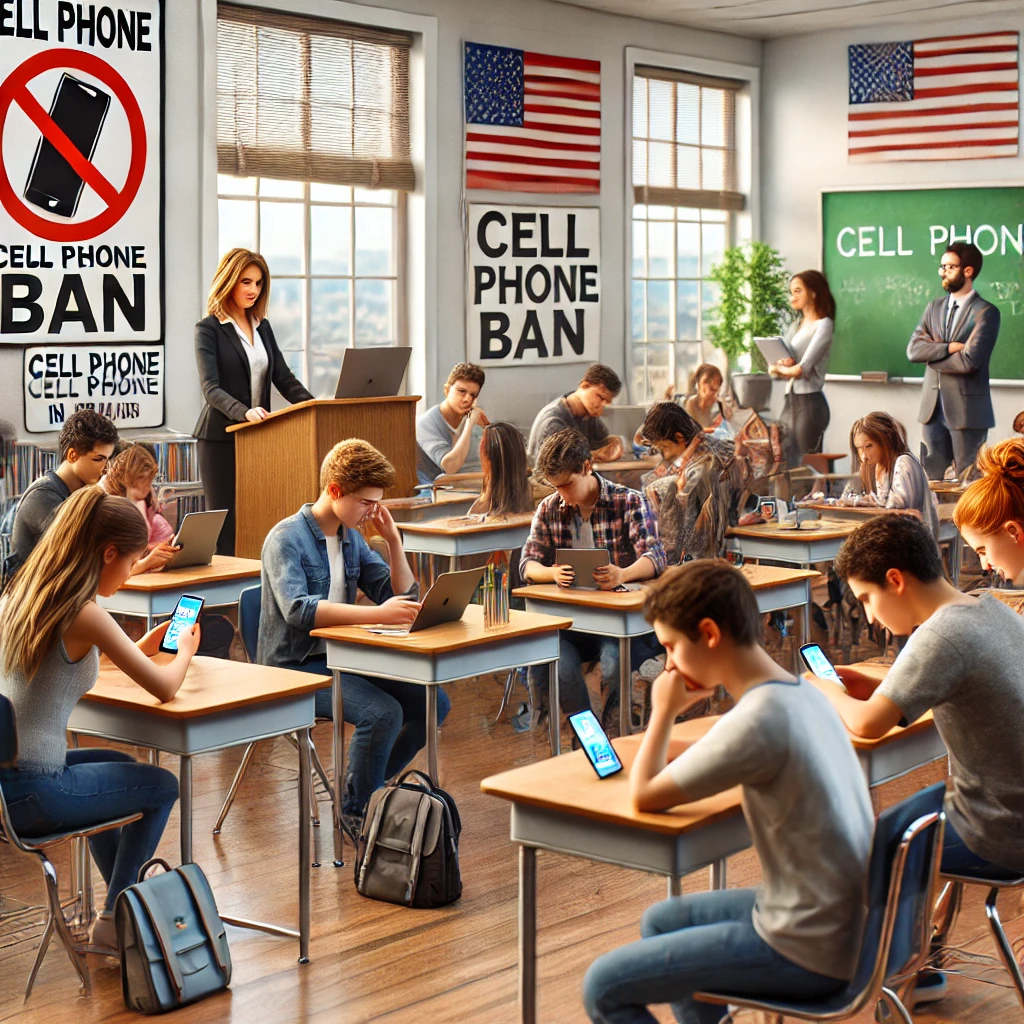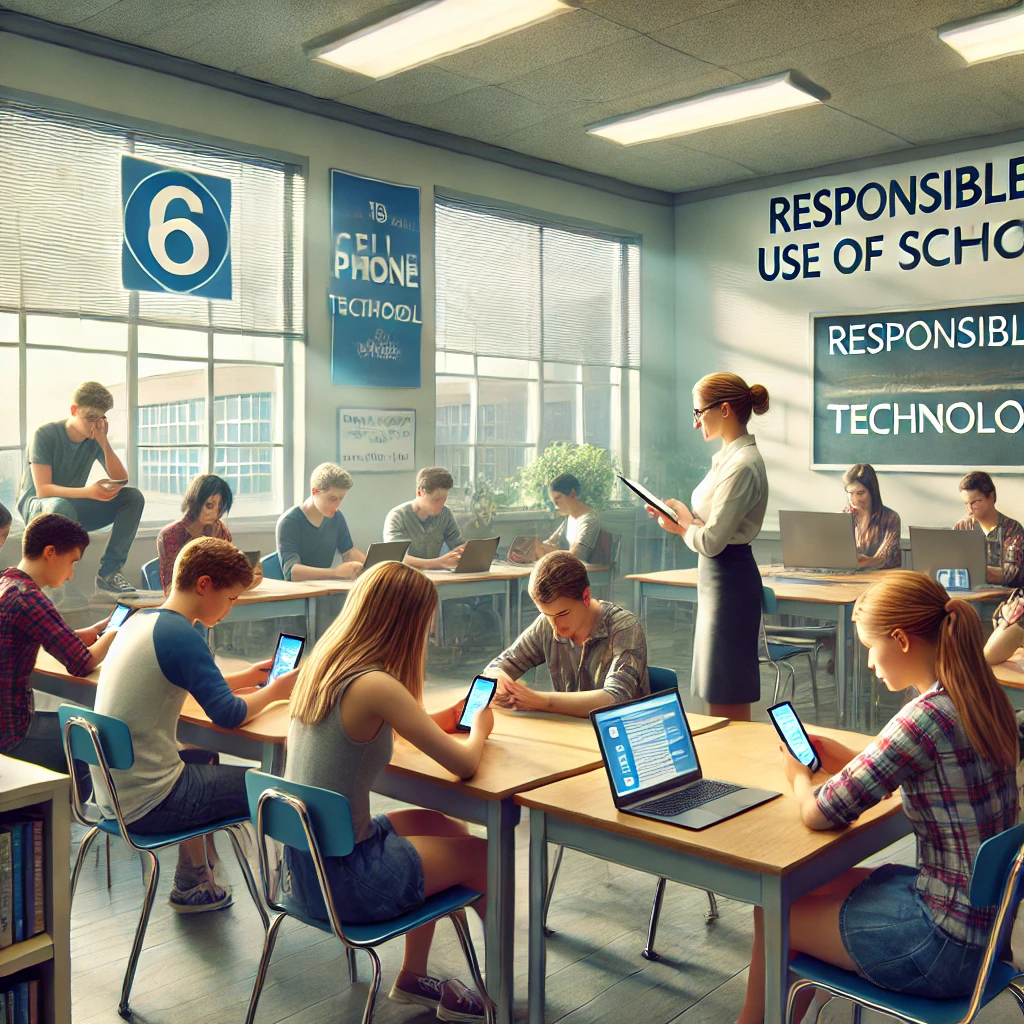A Cell Phone Ban in School: to Use or not to Use?
The cell phone debate has been raging in schools for the better part of the last decade, if not longer. There are multiple different lenses to this argument, and lately, the idea of a cell phone ban has been put into play in some schools. What is the correct answer? Is there one? One side is adamant that cell phones do not belong in the classroom, while the other side acknowledges that cell phones are now a way of life, and maybe we need to help teach young people how to manage this type of technology since it isn’t going anywhere. But where does the conversation go from here?
The Rise of Cell Phone Use During School Hours
In recent years, student phone use has become one of the largest sources of distraction in schools. Whether it’s texting, gaming, or scrolling through social media platforms, students’ use of cell phones has steadily increased during school hours. With the advent of smartphones, middle and high school teachers report that their students are more distracted than ever during class time, contributing to a decline in academic performance.
According to the Pew Research Center, more than 95% of teenagers in the United States own or have access to a smartphone. This is not just an issue of access; it is also about the significant amount of time students spend on their devices. Social media use, in particular, has skyrocketed, leading some to question the long-term effects on children’s mental health. For school leaders, balancing technology in the classroom with the need to maintain students’ focus has become a major problem.
The Push for Cell Phone Bans in Schools
In response to the growing concerns surrounding student smartphone use, many local school districts and state lawmakers have started considering or implementing cellphone bans. For instance, New York Governor Kathy Hochul and California Governor Gavin Newsom brought the conversation about banning phones in schools to the forefront, each emphasizing concerns over students’ mental health and classroom distractions.

Several public schools, particularly in California, have adopted strict cellphone restrictions. The Roseville City School District, for example, enacted a new policy that prohibits handheld cellphones during instructional time, limiting students’ ability to use their devices. Similarly, the Los Angeles Unified School District, the largest school district in California, has moved toward tighter restrictions. Some school administrators, like Schools Chancellor David Banks of New York City Schools, have implemented cellphone bans or policies aimed at curbing excessive smartphone use during class time.
The Impact of Cell Phone Use on Academic Performance and Mental Health
Many teachers and school officials have argued that cellphone bans are necessary to curb distractions and improve test scores. A significant amount of instructional time is lost due to phone-related interruptions, which can have a direct impact on student achievement. High school teachers often struggle to maintain students’ focus when phones are in their hands, especially with notifications from social media platforms drawing constant attention.
In addition to academic concerns, there is a growing body of evidence linking excessive smartphone use to mental health issues. U.S. Surgeon General Vivek Murthy has warned of the mental health crisis among young people, citing social media addiction as a key contributor. In recent years, researchers have identified a connection between students’ use of smartphones and an increase in mental health concerns such as anxiety, depression, and feelings of isolation.
Social media companies, in particular, have come under fire for their role in perpetuating this mental health crisis. The addictive nature of social media platforms and the constant comparison culture they foster can exacerbate feelings of inadequacy and stress in young people. As a result, school leaders and policymakers have begun to view cellphone bans not only as a way to boost academic performance but also as a means of protecting the mental health of our youth.
The Role of State Legislation and Local School Districts
At both the state level and local level, lawmakers and school boards are grappling with how best to handle the issue of student cellphone use. In California, Assembly Bill 272 was introduced as an effort to give local school districts more authority to set cellphone policies. This move came after years of debate and increasing pressure from parents and educators who were concerned about the impact of smartphones on students’ well-being.
School districts in South Carolina and New York have also been experimenting with various approaches to cellphone restrictions. Some charter schools have gone so far as to implement complete cellphone bans during the entire school day, while others are adopting more flexible cellphone policies that allow for limited phone usage outside of class time. These policy decisions are often met with mixed reactions from students, parents, and school staff.
Are Cell Phone Bans the Best Solution?
While cellphone bans may seem like an effective solution to the issues of classroom distractions and mental health concerns, not everyone agrees that they are the best approach. Some argue that banning phones entirely ignores the reality of life in the digital age. Instead of prohibiting phone usage, they suggest that schools should focus on teaching students how to manage their time and use technology responsibly.
Middle school teachers, in particular, see an opportunity to guide students through the challenges of social media use and smartphone management. They argue that teaching digital literacy skills can help students develop healthy habits and better cope with the pressures of social media platforms. According to the California School Boards Association, this could involve working closely with social media companies to promote best practices and minimize the negative effects of excessive smartphone use.
In a world where technology is ubiquitous, students need to learn how to balance their online lives with their academic and personal responsibilities. Educators and school officials are increasingly recognizing the importance of helping students develop these skills rather than simply removing the technology from their hands.
Finding a Balance Between Technology and Learning
So, where do schools go from here? It seems that the issue of cell phones in schools requires a more nuanced approach than a one-size-fits-all cellphone ban. Schools need to find a place of focus, where students can benefit from the advantages of smartphones—such as access to information and educational apps—without falling victim to the distractions of social media and messaging.

School administrators and policymakers may need to adopt a hybrid approach that balances technology use with restrictions during class time. Some schools have introduced policies that allow students to use their phones only during non-instructional time, such as lunch breaks or at the end of the school day. This approach ensures that phones are not a distraction during lessons while still acknowledging students’ desire to stay connected.
Moreover, it is essential for educators to receive adequate training on how to incorporate smartphones into their classrooms in a productive way. This may involve creating digital literacy programs that teach students how to use their phones for research, organization, and collaboration while minimizing distractions.
No Ban? No Problem.
Some schools will not enter the arena of policing cell phone usage, and the students know this. How can a teacher possibly fight this uphill battle? This idea might be even easier than you think.
Allow the students to charge their phones in your classroom!
Set up a charging station, preferably close to your desk if room allows for it. Have surge protectors, multiple charging ports, etc. While some balk at this idea (as if you’re aiding the issue) the fact of the matter is if they’re charging their phones, they can’t be on them. You can even make the rule that if the phone is charging, they cannot get it until the end of the class period.
Another option is to USE them in the classroom. Find apps that fit in with your curriculum and have the students download them and utilize them. We are living in a world where phones will most likely always be at an arms reach; it is essential that someone helps them realize the balance of living life in an analog way and using the tools they literally have in their pocket.
The Role of Policy and School Leadership Moving Forward
As state lawmakers and local school districts continue to debate the role of cell phones in schools, it is clear that this issue will not be resolved overnight. Public schools across the United States are navigating a complex landscape, where the need for student safety, mental health, and academic success must be balanced with the realities of modern technology.
California school districts and policymakers, including Governor Gavin Newsom, have acknowledged the challenges presented by student smartphone use. However, rather than pushing for blanket cellphone bans, many are advocating for flexible policies that can be adapted to the unique needs of individual schools.
Board member Tanya Ortiz Franklin of the Los Angeles Unified School District emphasized the importance of collaboration between school leaders, teachers, and parents when developing cellphone restrictions. “We’re committed to working with all stakeholders to ensure successful implementation to create a culture where we become less reliant on our phones,” Franklin said.
As school districts and state legislatures continue to explore potential solutions, one thing is certain: the debate over cell phones in schools is far from over. The challenge moving forward will be to develop policies that promote a healthy balance between technology use and learning, while also addressing the very real concerns about mental health, academic performance, and classroom distractions.
Conclusion: A Future of Technology and Education
Cell phones in schools are not going anywhere. As we move into the next year and beyond, schools will need to adapt to the realities of student smartphone use while continuing to prioritize education and well-being. The path forward may not be clear, but it is evident that thoughtful policy decisions, grounded in both research and practical experience, will be key to finding a solution that works for all students.
Stop Driving the Teacher Struggle Bus
Are you struggling with student engagement, apathy, or keeping your class on track?
💫💫 There’s hope! 💫💫
If you’re ready to take the first step towards reviving student engagement and transforming your classroom, I invite you to join me for my free workshop “Reversing Student Apathy” designed to equip educators with innovative strategies that work.
This free teacher workshop offers educators a valuable opportunity to explore and address student apathy. By examining its causes and discussing strategies, participants will learn how to make meaningful changes in their teaching methods that are actually working. The sessions are engaging and collaborative, allowing educators to share experiences and develop a collective approach to improving student engagement.
Highlights include:
- Understanding the roots of student apathy and its impact.
- Strategies for enhancing classroom dynamics.
- The importance of educator-student relationships.
- Innovative teaching approaches for today’s students.
By the end of the workshop, you will not only understand what you need to accomplish to stabilize the 4 pillars of your classroom, but you will also walk away with 5 tangible ideas to try in the classroom the very next day.
Join today to be part of the solution to reigniting student enthusiasm and engagement.





